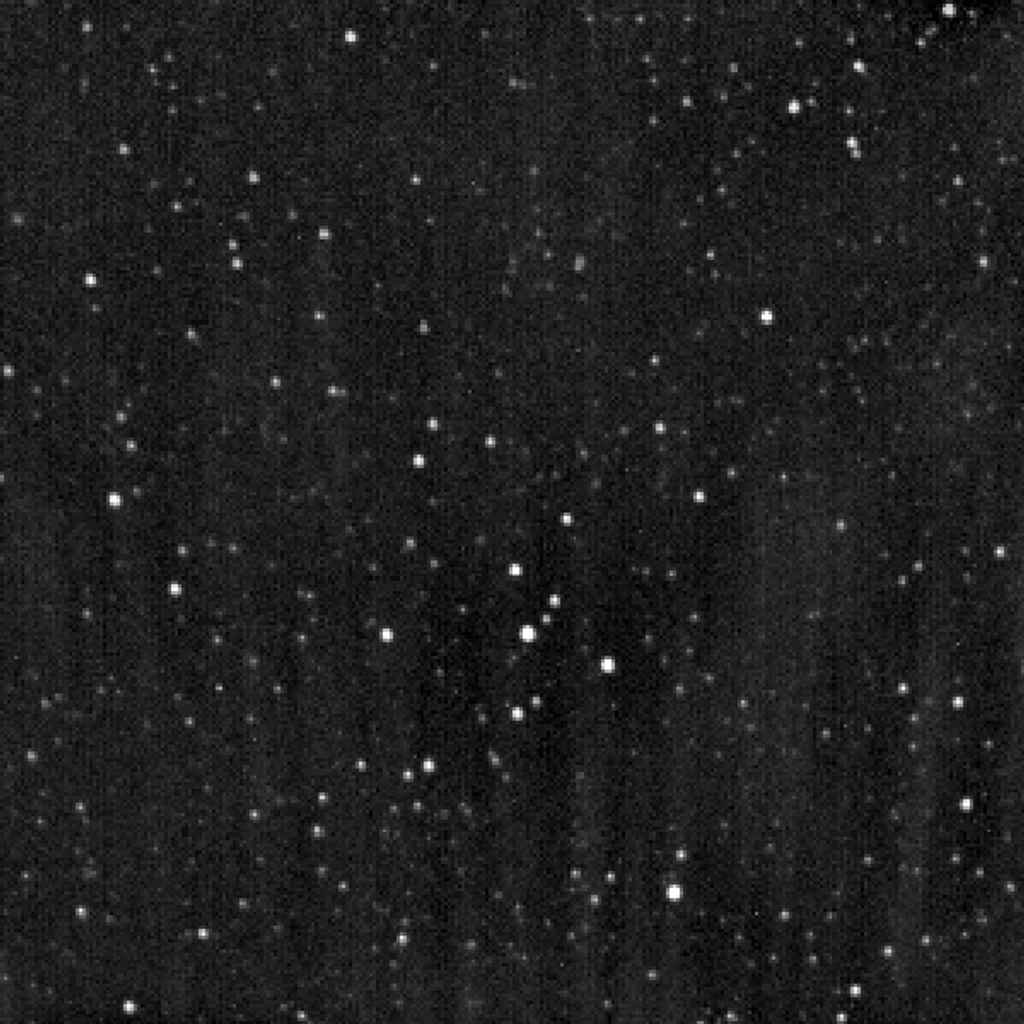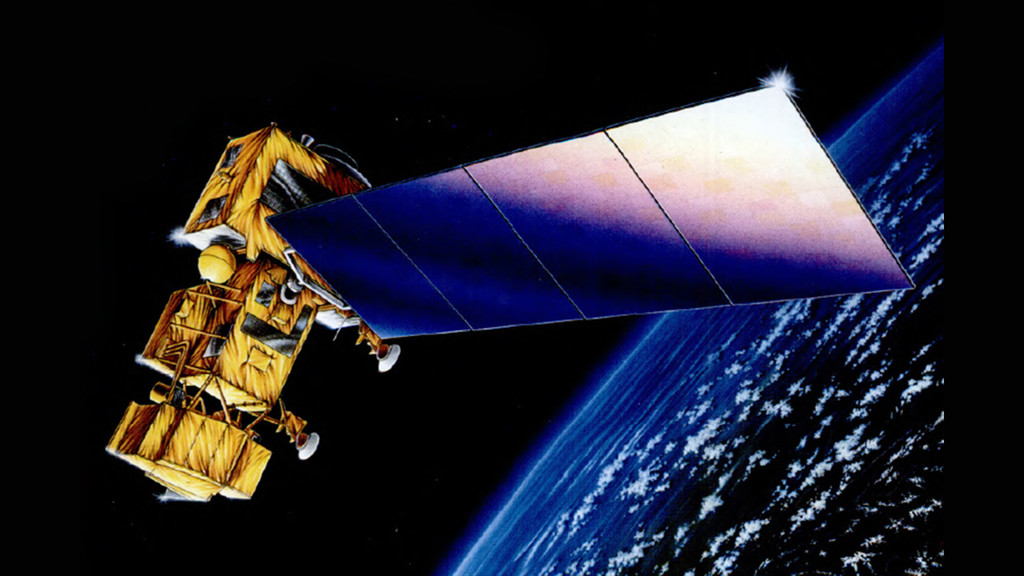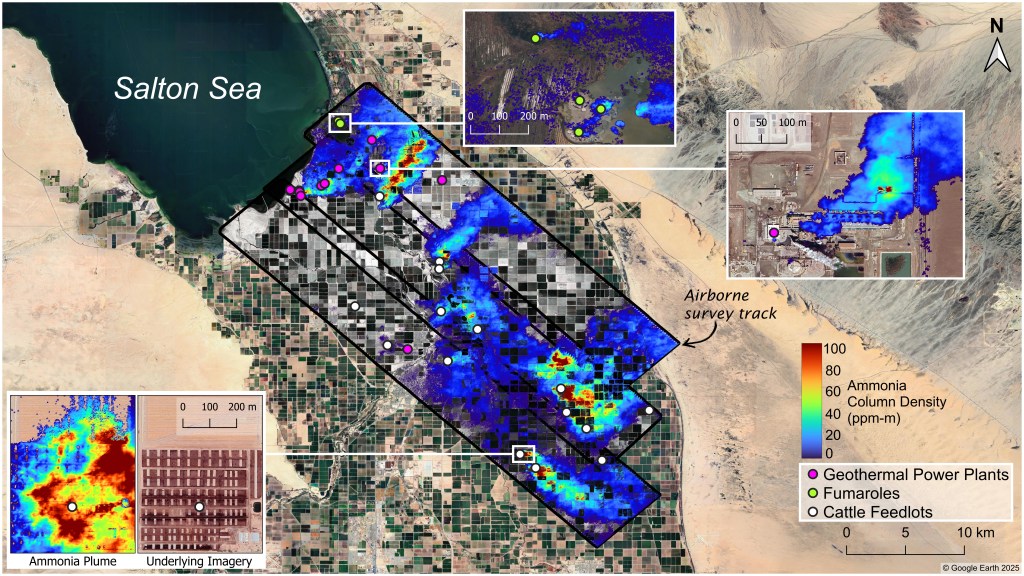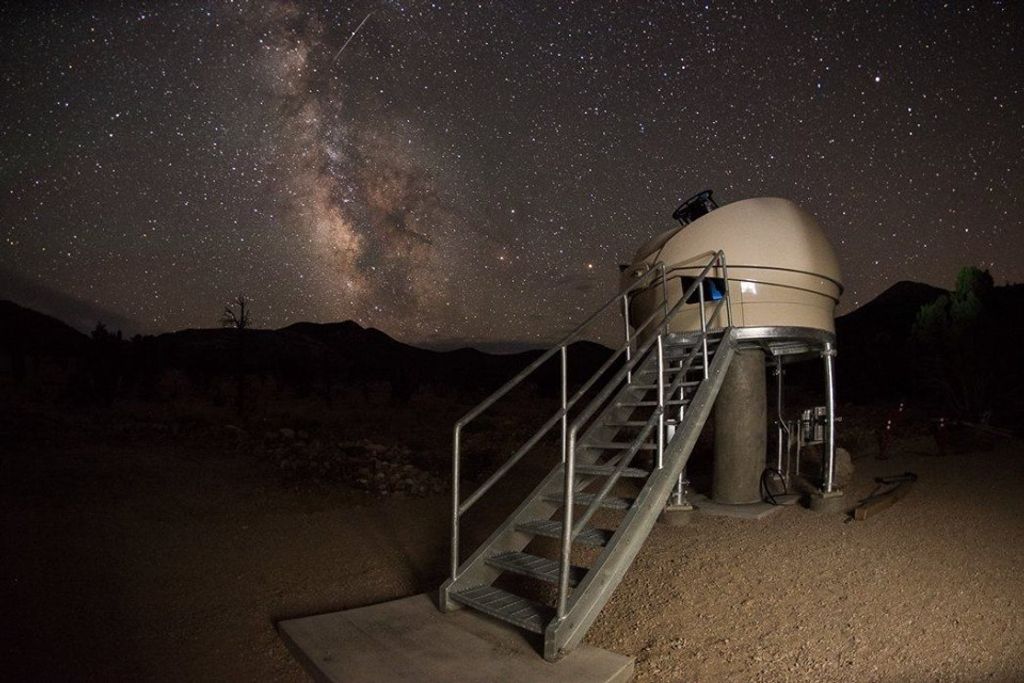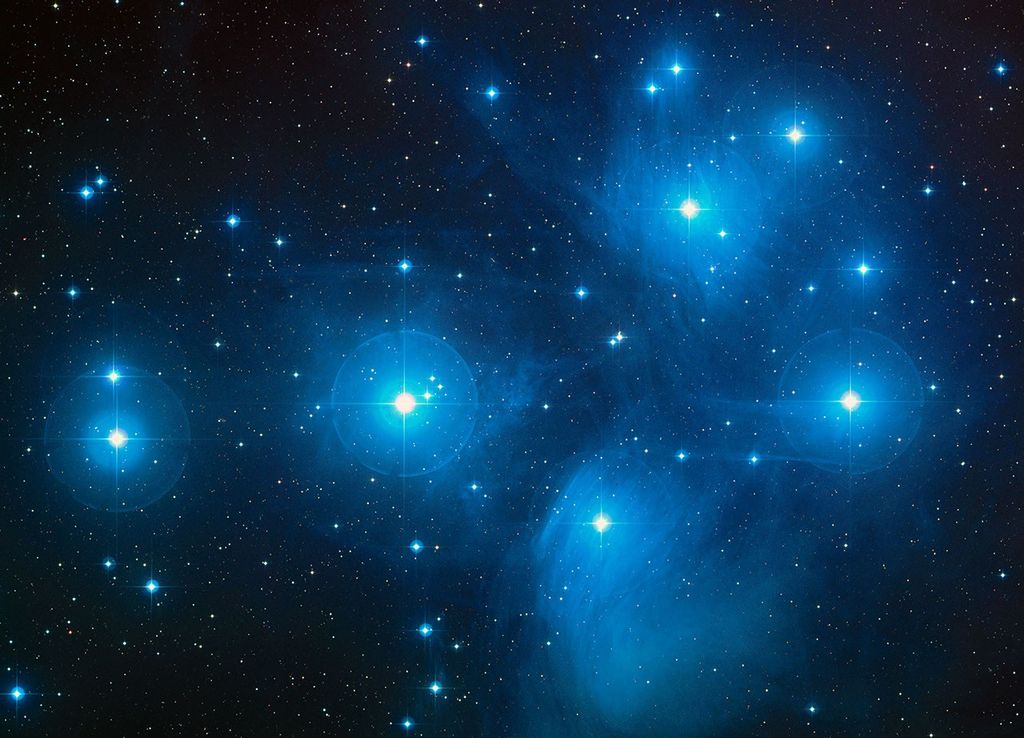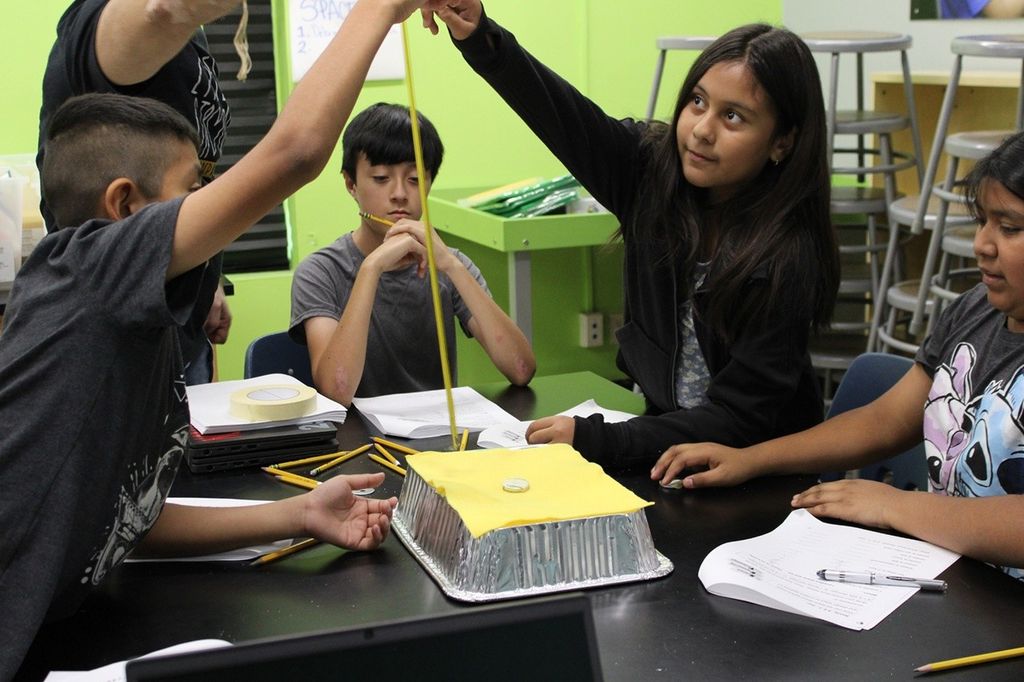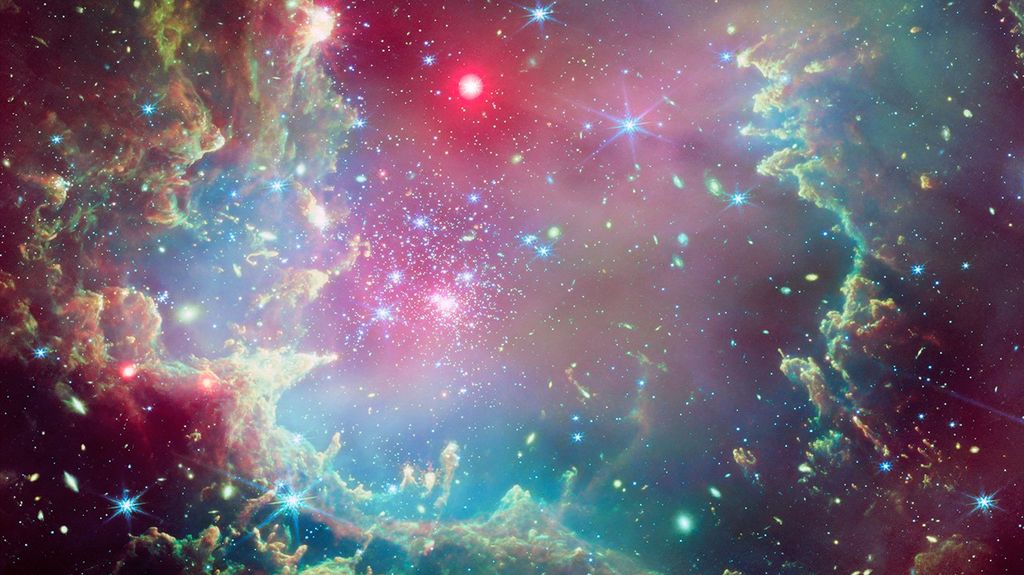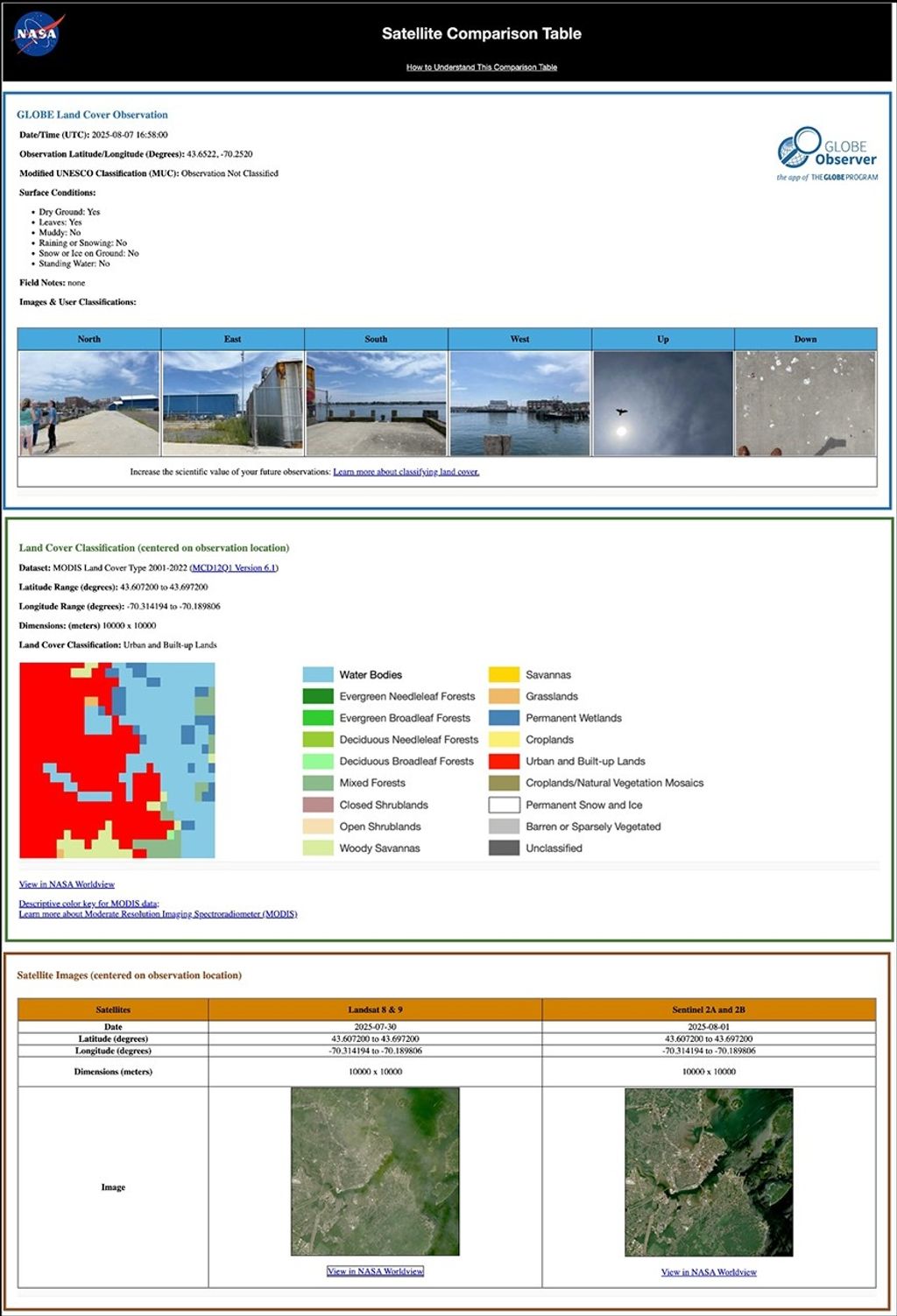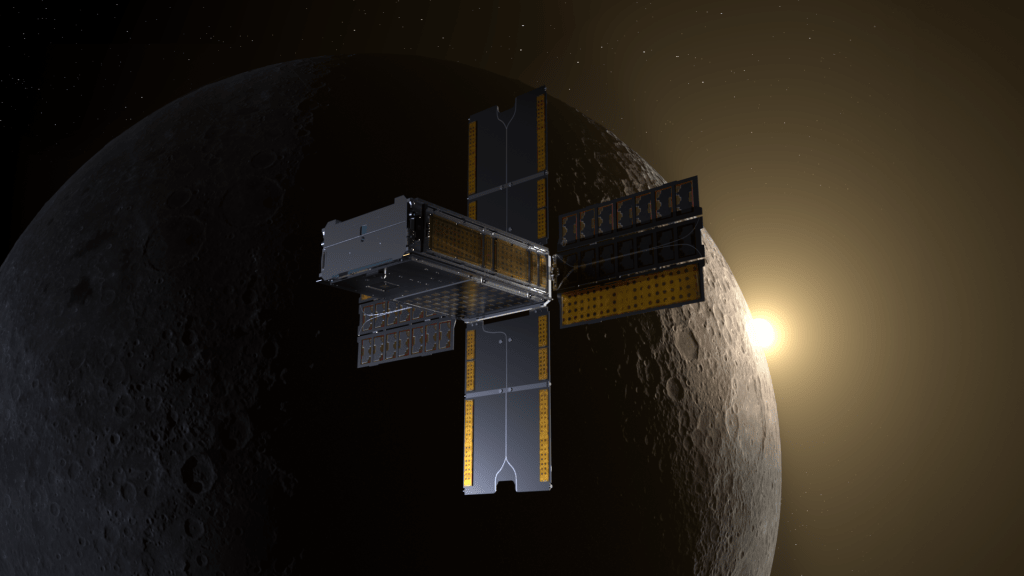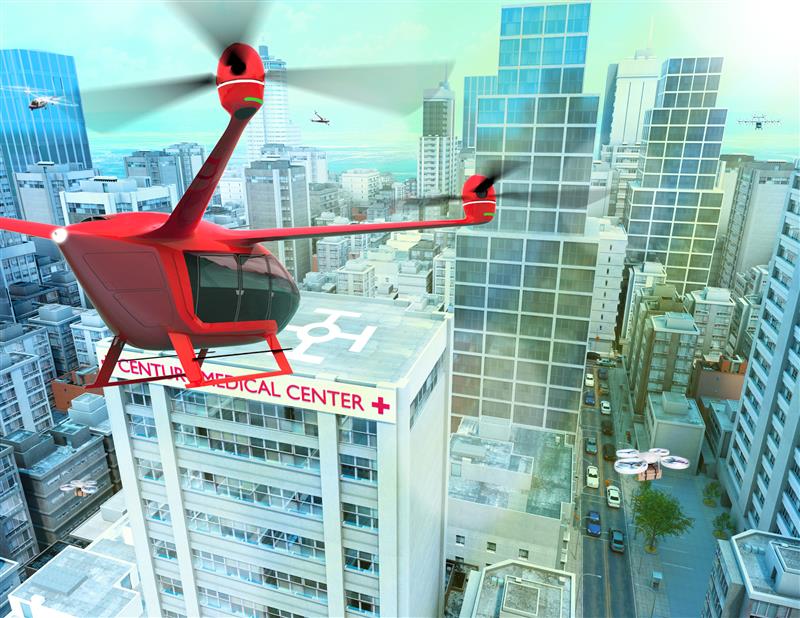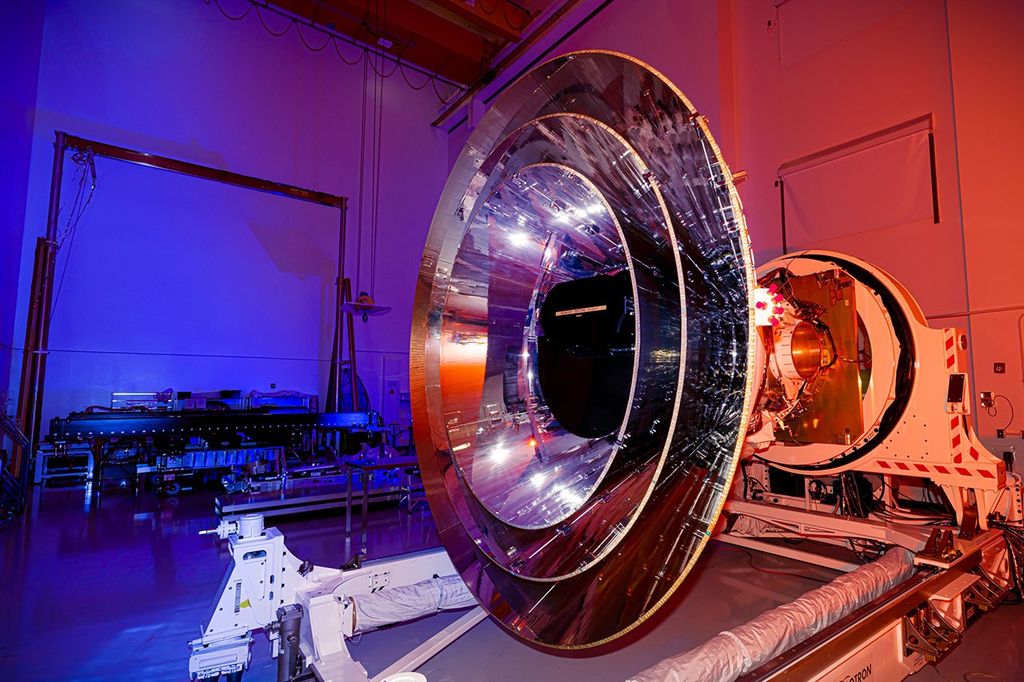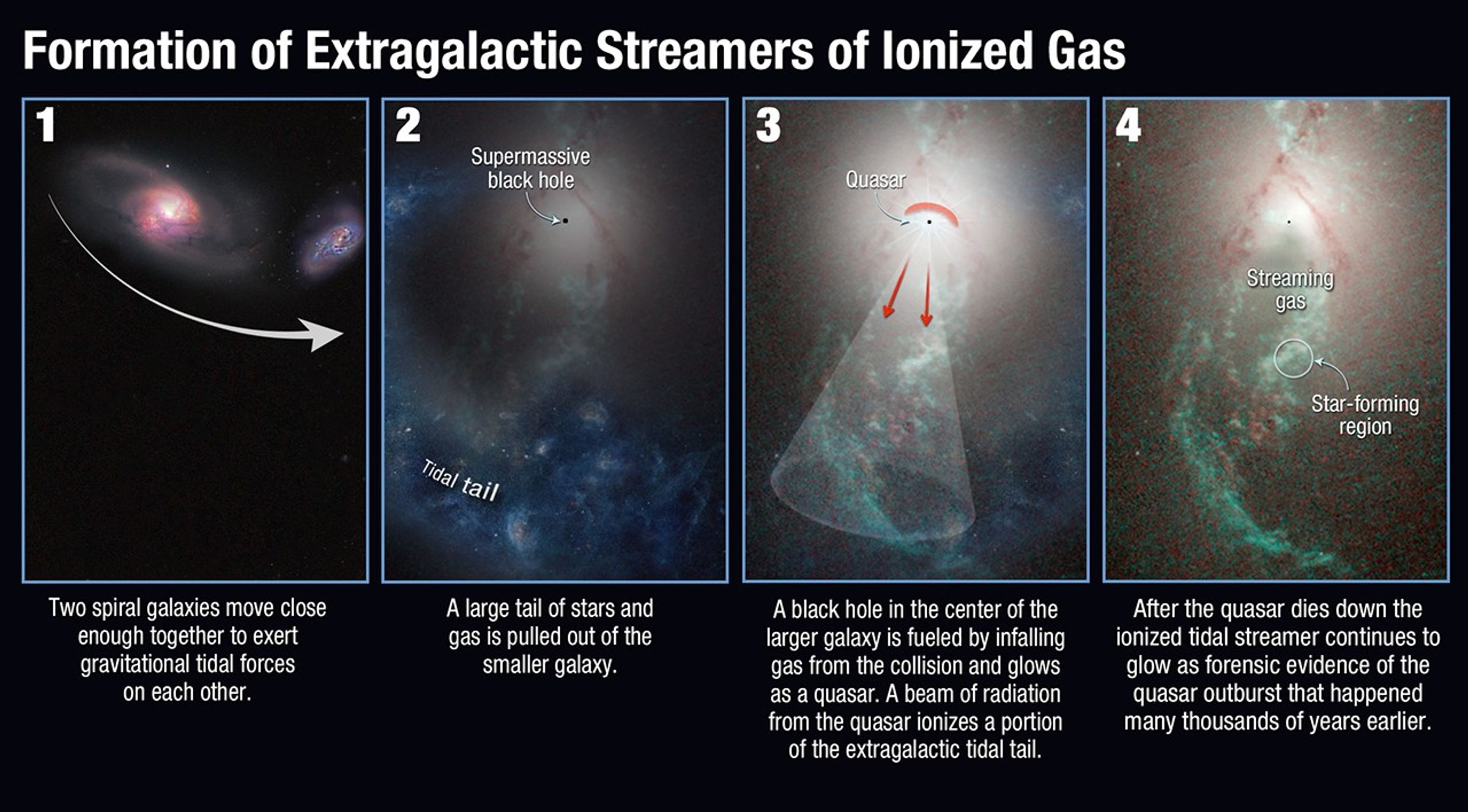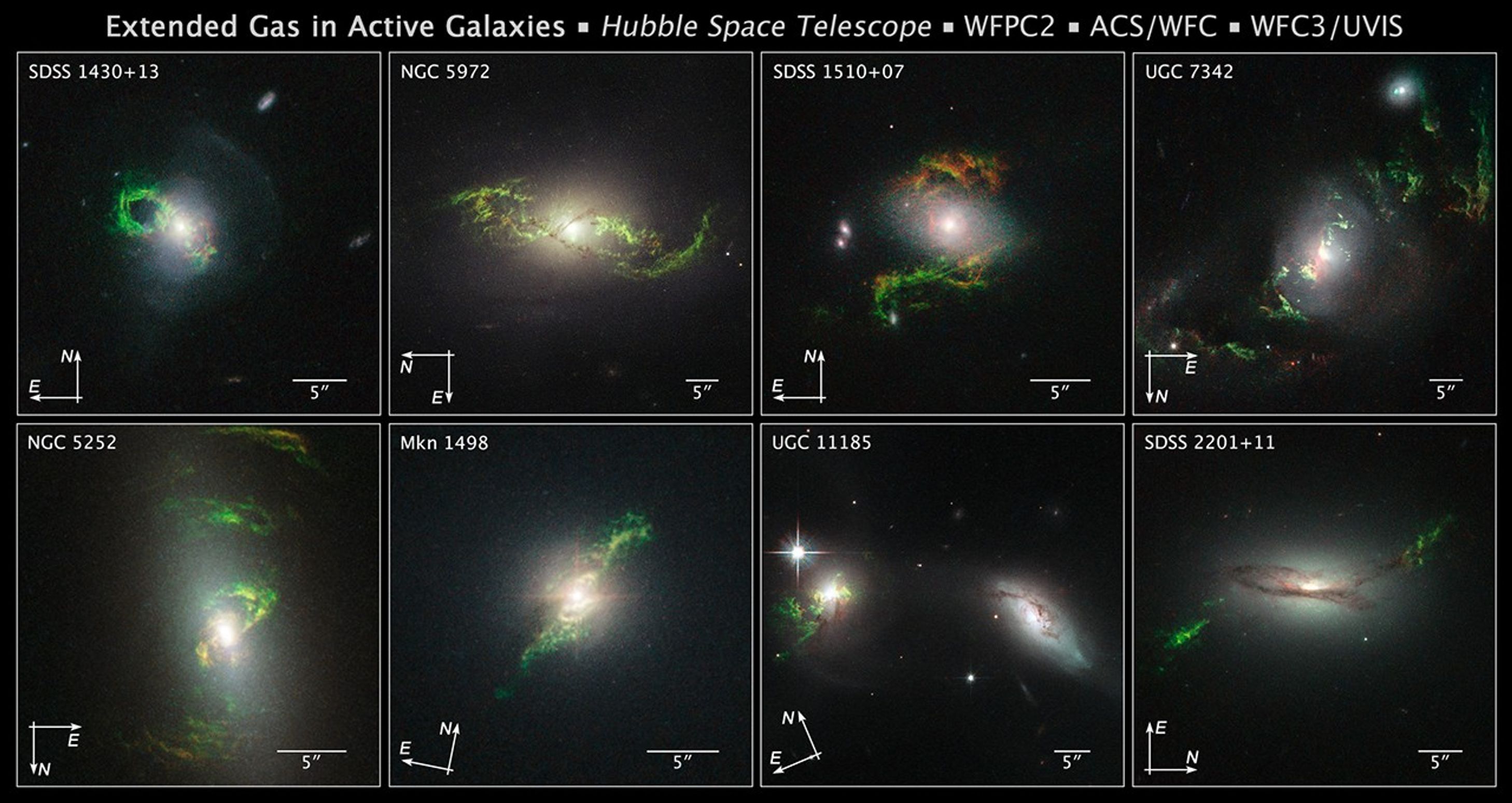1 min read
Extended Gas in Active Galaxies
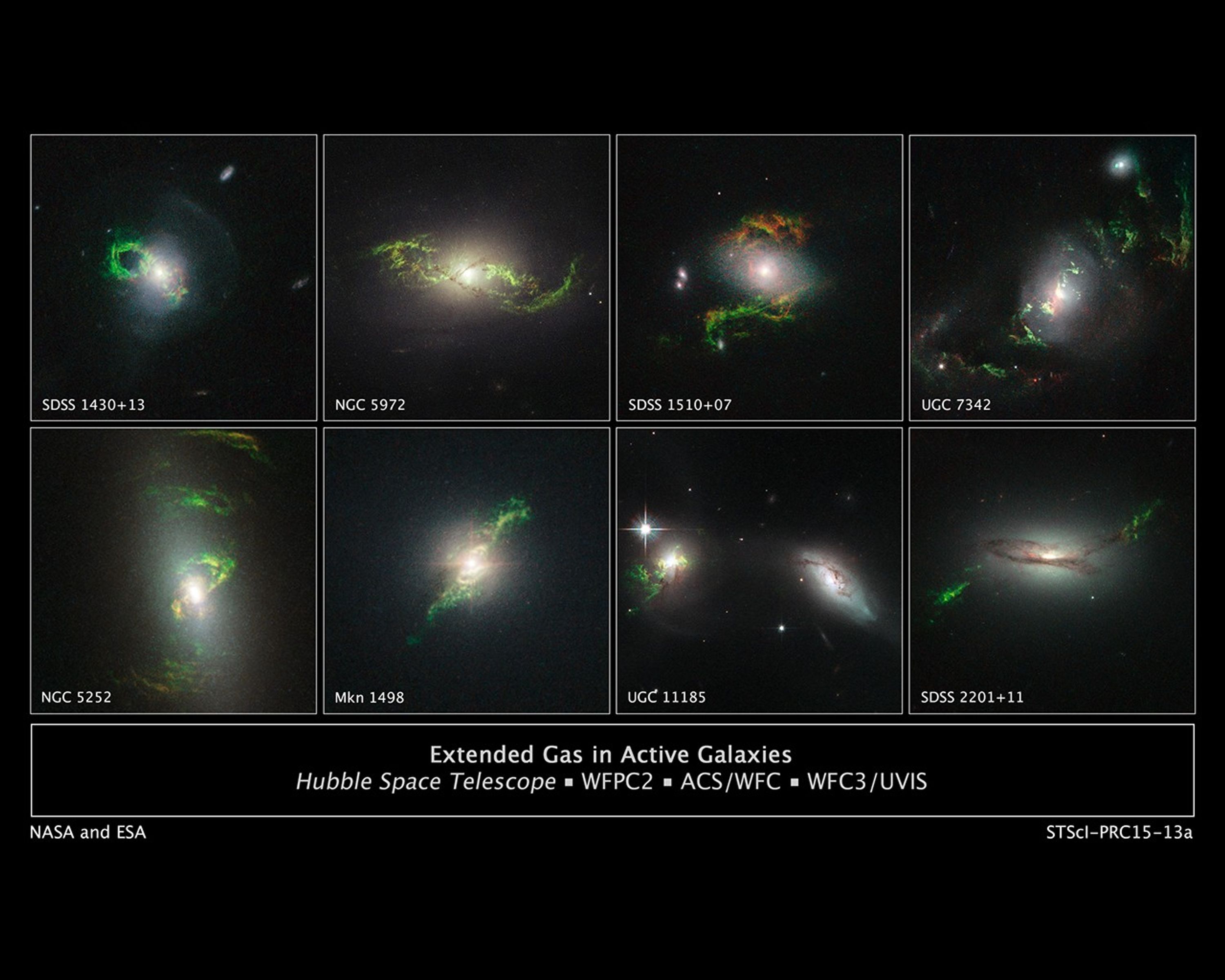
These Hubble Space Telescope images reveal a set of bizarre, greenish, looping, spiral, and braided shapes around eight active galaxies. These huge knots of dust and gas appear greenish because they are glowing predominately in light from photoionized oxygen atoms.Each galaxy hosts a bright quasar that may have illuminated the structures. The ethereal wisps outside the host galaxies were blasted, perhaps briefly, by powerful ultraviolet radiation from a supermassive black hole at the core of each galaxy. Material falling into the black hole was heated to a point where a brilliant searchlight beam traveled into deep space. Because the quasars are not bright enough now to account for the present glow of the blobs, they may be a record of something that happened in the past inside the host galaxies. The black holes may have been fueled through collisions between two galaxies, and the filaments may be forensic evidence for material tattered in the collision.
About the Data
- Data DescriptionData DescriptionProposal: A description of the observations, their scientific justification, and the links to the data available in the science archive.
Science Team: The astronomers who planned the observations and analyzed the data. "PI" refers to the Principal Investigator.The images were created from various Hubble observations of active galaxies from proposals 5426: PI Z. Tsvetanov (NASA/GALEX) et al. and 12525: W. Keel (University of Alabama, Tuscaloosa), K. Schawinski (ETH Zurich), V. Bennert (Cal Poly, San Luis Obispo), C. Lintott (Oxford University), D. Chojnowski (New Mexico State), D. Evans (Harvard-Smithsonian Center for Astrophysics), and M. Urry (Yale University). The science team comprises: W. Keel and W. Peter Maksym (University of Alabama, Tuscaloosa), V. Bennert (Cal Poly, San Luis Obispo), C. Lintott (Oxford University), D. Chojnowski (New Mexico State), A. Moiseev and A. Smirnova (Special Astrophysical Observatory, Russia), K. Schawinski (ETH Zurich), M. Urry (Yale University), D. Evans (Harvard-Smithsonian Center for Astrophysics), A. Pancoast (UC Santa Barbara), B. Scott (JPL), C. Showley (San Francisco State University), and K. Flatland (Cal Poly San Luis Obispo). Object name: Teacup Galaxy, SDSS 1430+13, 2MASX J14302986+1339117 Redshift: 0.0852 ACS: FR551N (blue) and FR716N (green) WFC3: F621M (blue) and F763M (red) Coordinates (J2000): RA: 14h 30m 29s.76 | Dec: 13° 39' 15".15 Constellation: Bootes Object name: NGC 5972 Redshift: 0.0297 ACS: FR505N (blue) WFC3: F673N (green), F621M (blue), and F763M (red) Coordinates (J2000): RA: 15h 38m 54s.04 | Dec: 17° 01' 37".48 Constellation: Serpens Caput Object name: SDSS 1510+07, 2MASX J15100402+0740370 Redshift: 0.0458 ACS: FR505N (blue) and FR716N (green) WFC3: F621M (blue) and F763M (red) Coordinates (J2000): RA: 15h 10m 03s.96 | Dec: 7° 40' 40".90 Constellation: Bootes Object name: UGC 7342 Redshift: 0.0477 ACS: FR505N (blue) and FR716N (green) WFC3: F621M (blue) and F763M (red) Coordinates (J2000): RA: 12h 18m 19s.09 | Dec: 29° 15' 12".26 Constellation: Coma Berenices Object name: NGC 5252 Redshift: 0.0228 WFPC2: FR533N (blue), F673N (green), F588N (blue), and F606W (red) Coordinates (J2000): RA: 113h 38m 15s.74 | Dec: 04° 32' 34".72 Constellation: Virgo About the Objects Object name: Markarian 1498 Redshift: 0.0547 ACS: FR551N (blue) and FR716N (green) WFC3: F621M (blue) and F763M (red) Coordinates (J2000): RA: 16h 28m 03s.89 | Dec: 51° 46' 34".39 Constellation: Draco Object name: UGC 11185 Redshift: 0.0412 ACS: FR505N (blue) and FR716N (green) WFC3: F621M (blue) and F763M (red) Coordinates (J2000): RA: 18h 16m 10s.43 | Dec: 42° 39' 32".59 Constellation: Lyra Object name: SDSS 2201+11, 2MASX J22014163+1151237 Redshift: 0.0296 WFC3: FQ508N (blue), F673N (green), F621M (blue), and F763M (red) Coordinates (J2000): RA: 22h 01m 41s.51 | Dec: 11° 51' 27".80 Constellation: Pegasus - InstrumentInstrumentThe science instrument used to produce the data.HST>WFPC2, HST>ACS/WFC, and HST>WFC3/UVIS
- Object DescriptionObject DescriptionThe type of astronomical object.Active Galaxies
- Release DateApril 2, 2015
- Science ReleaseHubble Finds Phantom Objects Near Dead Quasars
- Credit
Related Images & Videos
Share
Details
Last Updated
Aug 17, 2025
Contact
Media
Claire Andreoli
NASA’s Goddard Space Flight Center
Greenbelt, Maryland
claire.andreoli@nasa.gov






